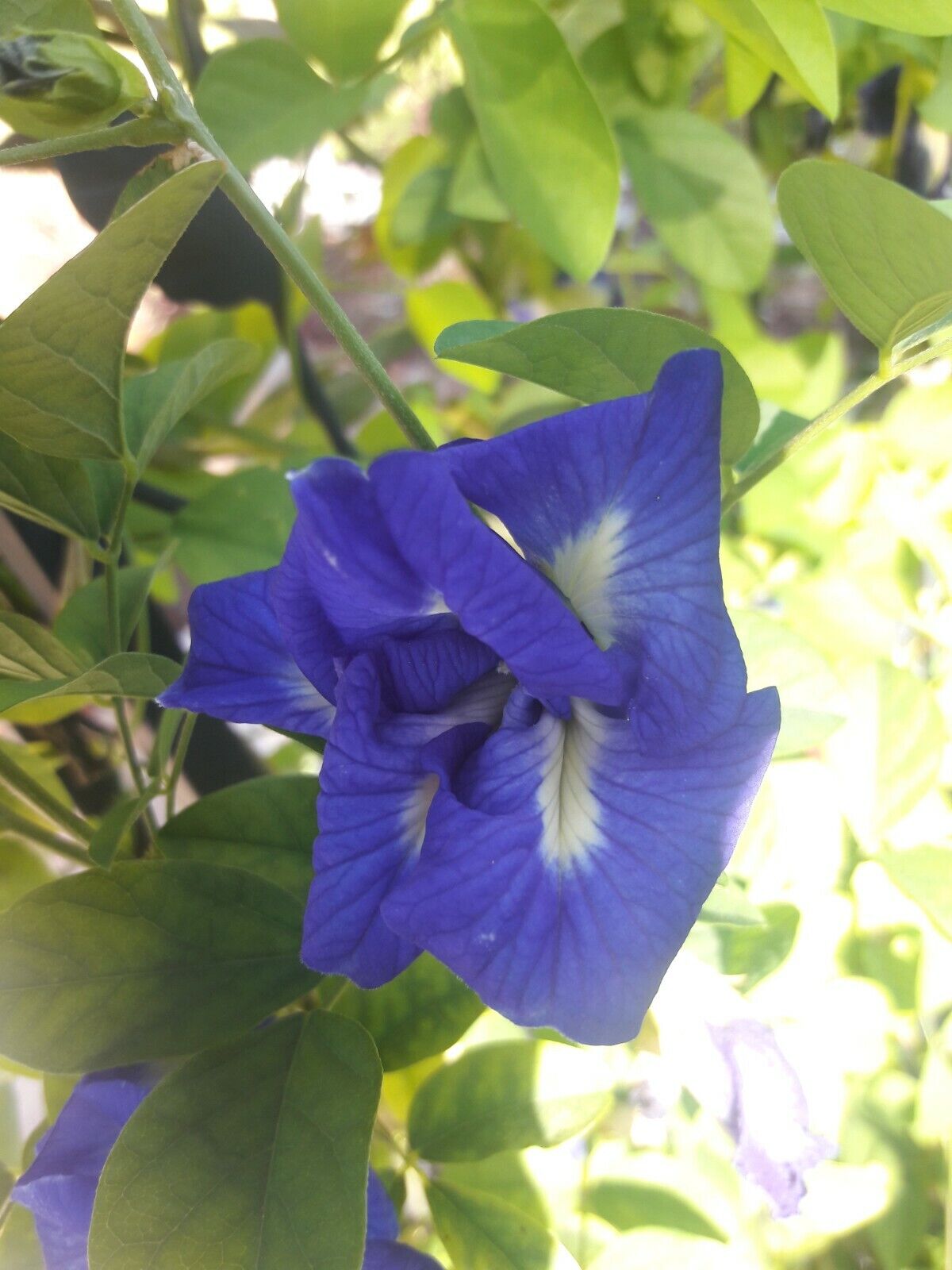-40%
Blue Butterfly Pea Ternatea Clitoria Flower Seeds x 25 Organic Free Shipping
$ 2.1
- Description
- Size Guide
Description
Clitoria Ternatea Care: Growing The Butterfly Pea PlantClitoria Ternatea
(klih-TOH-ree-uh, tern-AH-tee-uh), commonly called butterfly pea, is a flowering plant species and belongs to the Fabaceae family along with the
Blue Indigo plant
and
Dwarf Poinciana
.
The herbaceous plant is native to tropical Asia including regions in the Indian subcontinent and Southeast Asia (Indonesia, Bangladesh, Malaysia, and Thailand).
Pin
Today, the butterfly pea is widely distributed in the United States, Australia, and Africa.
The genus name “Clitoria” stems from “clitoris” – a female sex organ.
The flowering species was named this because of the resemblance it shares with a clitoris.
The other half of the name “ternatea” refers to the Moluccan Island of Ternate from where this plant was extracted first.
Owing to the plant’s distinctive appearance and features, it has gathered a few common names as follows:
Asian pigeonwings
Bluebellvine
Blue pea flower plant
Cordofan pea
Darwin pea
Growing Clitoria Ternatea Butterfly Pea Care
Size and Growth
Butterfly peas are fast growing evergreen perennial plant vines, reaching a height of 6’ – 10’ feet and a spread of 2’ – 3’ feet.
At maturity, these plants feature deciduous and elliptic leaves (1” – 2” inches long) on a climbing stems of 1’ – 9’ feet long.
The plant is best adaptable to locations exposed to annual summer rainfall of approximately 12” inches.
Flowering and Fragrance
Butterfly pea flowers are large showy purple flowers of 1” to 3” inches long.
The hibiscus usually blooms in early spring, early/late summer, or early fall in various flower colors including mauve, white, and deep blue.
The structure of the clitoria ternatea flowers consists of a prominent banner, wing, and keel, presenting a resemblance with a butterfly.
These vivid blue flowers bloom in the morning in an upside-down position and carry no scent or flavor. Full sunlight will provide the best flowering results.
As a member of the pea family, the Darwin blue pea flower self-fertilizes and never fully forms.
Light and Temperature
The Clitoria ternatea plant enjoys full sun for best growth.
However, this easy-to-grow plant thrives in low light conditions including partial shade.
It also tolerates cool and moist climatic conditions to some extent but wants frost free conditions.
The flowering pea performs better in locations with an average temperature of 66° to 82° degrees Fahrenheit (19° – 28° C) and bears temperatures as minimum as 59° degrees Fahrenheit (15° C).
The plant is recommended for USDA hardiness zones from 9 – 10.
Watering and Feeding
Growing butterfly pea flower prefers regular watering in the first growing season to absorb nutrients in the soil.
The spurred variety is drought-tolerant but once it matures, it requires small but additional amounts of irrigation, especially in hot and dry weather conditions.
The flowering specimen requires no fertilizers.
However, nourish the plant once or twice a year with a water-soluble fertilizer, preferably an organic fertilizer.
Soil and Transplanting
Clitoria ternatea prefers rich, sandy soil quality with a pH value from 6.6 to 7.5.
For best results, ensure the soil is well-drained and consists of compost and organic matter.
Consider transplanting when the seedlings reach a minimum height of 6” inches.
Dig deep and wide, to easily remove the root system.
Shake off excess soil and unwanted components from it.
Dig a new hole, twice the size of the current root system.
Transfer butterfly pea vines into a new hole, making sure to mix in plenty of compost and native soil.
Water the plant thoroughly until the roots are completely established.
Grooming and Maintenance
Avoid overwatering to maintain the plant in its best condition.
Frequently prune to prevent it from turning leggy or bushy.
The pruning entails eliminating dead, damaged, or diseased components from the plant in any season.
When planting, choose any type of soil as long as it is well-drained and place the plant where it receives maximum sunlight.
How To Propagate Butterfly Pea Flower
Clitoria ternatea propagates from seeds and cuttings.
In the former technique, sow pea seeds in a pot or a container in early spring in well-drained soil.
Another option is to sow the seeds indoors before the last winter.
Make sure to soak the seeds in water for 3 to 4 hours in advance to improve the germination rate.
Seeds usually germinate in a week or two, till then keep the soil moist.
In the cutting method, take the cuttings and root them in the vermiculite or moist sand.
Butterfly Pea Flower Pests and Diseases
Clitoria ternatea L (Linn) suffers from attacks by aphids and spider mites that feed on the perennial shrub. Apply neem oil to get rid of the aphids and spider mites.
However, overwatering or under-watering often cause pests such as caterpillars and grasshoppers to attack the blue pea.
Clitoria Ternatea Uses
It’s often used as a cover crop, a ground cover or to
climb up a pergola
, trellis, or fence.
Butterfly pea is a traditional ayurvedic medicine and is used as a nootropic, memory enhancer, anti-diabetic, anti-asthmatic, laxative, diuretic, anticonvulsant, anti-pyretic, and anti-stress agent.
One study shows root extract treatment of Clitoria ternatea during the growth spurt period enhances learning and memory in rats.
In Ayurveda, the medicinal plant, which contains valuable triterpenoids, cyclotides, and anthocyanins, is soaked into hot water to make a striking blue tea.
This vibrant tea helps treat a wide range of ailments and promote nutrients such as flavonol, glycosides, antioxidants, peptides, and amylase.
Ternatea extracts are also in many beauty products to enhance the quality of skin and hair. The flowers are used to color cakes, pudding, and foods.










